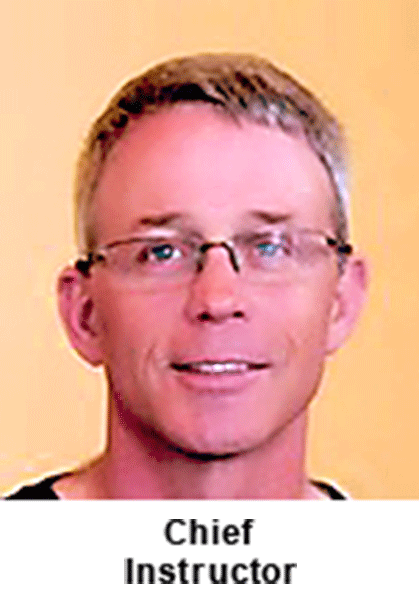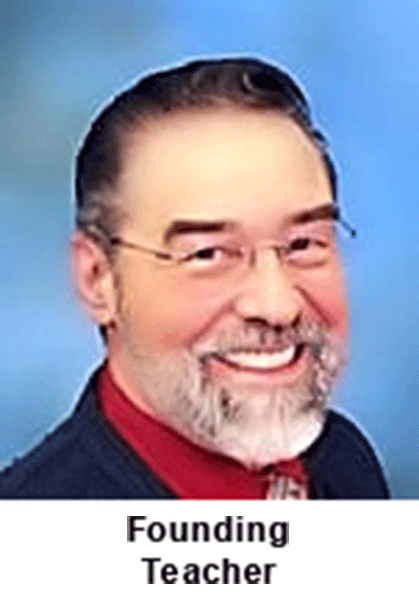
With nearly four decades of training in martial arts, Ron has focused on the practical application of the art for the majority of that time. In 1976, Ron started taking Okinawa-Te at the Thornton Recreation Center. Even though Okinawa-Te is a traditional Japanese art, the instructor was focused on the practical side of the art. After six years of training, Ron received his black belt from Earl Alston and taught the children's program for a year before taking a break to finish high school and attend Front Range Community College in Westminster, Colorado for Electronics. Some time after that, Ron resumed his training with Earl and continued training until Alston retired in 1990. Seeking a place to train, Ron started to study at a Nisei Goju-Ryu Karate school on East Colfax run by Clifton C. Diggs. This was another Japanese art with very intense classes that involved enthusiastic sparring sessions and drills done with bare feet on the sidewalks of East Colfax in February. After several injuries with two bad knees, Ron sought after a gentler form of martial arts and found an Aikido school in Denver. Ron studied there for three and half years, then acquired the rank of second kyu under Stephen Varjan before herniating lumbar discs L4 and L5 in his back while lifting weights. After four years of chiropractic treatments and deciding against having back surgery, Ron finally found his martial arts "home" in training with Bob Orlando in 1998. Twelve years and a 25-page Black Belt thesis later, Ron received his black belt. Two years after that Ron earned a Guru – Full Teacher & Rank certificate. Ron understands VERY well and teaches superbly what we do in our school. You can reach him via his e-mail: Ron@OrlandoKuntao.com . |
|
|


A Colorado resident and computer professional since 1965, Bob Orlando was introduced to the martial arts while on active duty in the U.S. Marines. However, it was not until after he left the Corps that the flicker of interest that was kindled there became his consuming fire. In 1968 Orlando began serious study in Chinese kenpo-karate 1. Shortly thereafter he switched to kung fu, studying under Al Dacascos (then teaching in Denver, Colorado). His training with Dacascos lasted nearly four years, until a back operation made it impossible to continue in Dacascos' high-kicking style of kung fu. It was back to kenpo. There Bob received his first-degree black belt from Dr. John P. Cochran. Although Bob has subsequently earned additional rank in multiple arts, he prefers to say that he is a life-long student of the arts and leave it at that. "Rank," he says, "is excess baggage. It becomes a hindrance to learning because everyone expects that you already know everything." Ever a student of the arts, Bob's quest for knowledge has taken him into aikido, Small-Circle Jujitsu, grappling, iaido, and Filipino martial arts. However, the period in his training which he calls catalytic was the time spent studying Chinese kuntao and Dutch-Indonesian pukulan pentjak silat under master Willem de Thouars. After a decade of training with de Thouars, Bob received his teaching certificate from him in 1994. A graduate of a Jesuit university, Bob is the author of Indonesian Fighting Fundamentals: The Brutal Arts of the Archipelago, Martial Arts America: A Western Approach to Eastern Arts, and four highly recommended martial art videos. While owner and operator of his own school, Bob still considers himself a "full-time" student of the arts. His school is a small one, and that's just the way he likes it. "Our school is our laboratory. There, we test everything from the practicality of forms training and techniques, to the latest craze (or crazies) in self-defense. We have a formal curriculum — from white to black belt — although it is not cut in stone. I guess that for us, the concrete is never quite dry, for we (including myself) are constantly learning." Of his own abilities, he says, I have skills. After almost 50 years in the arts — I should. My skills, however, came not because of any natural physical ability, but because I worked very hard with the God-given talent with which I was blest to get to where I am today. My strengths are my singleness of purpose, my unwavering dedication to personal excellence in self-defense, and my analytical mind. My contribution to the art comes not from what I can do physically. Rather, it comes from my ability to effectively share what I know with others. I take the complicated and make it simple. I am a teacher.
|
|
Footnotes:
|
|
©Copyright Bob Orlando, 1999-2016 All rights reserved |
http://www.OrlandoKuntao.com
E-mail: Ron@OrlandoKuntao.com |
Last update:
Aug. 6, 2016 by Bob Orlando |